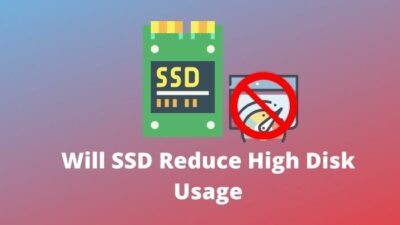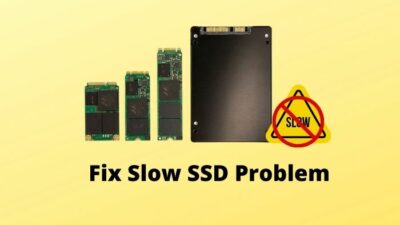I know it is scary when you install an SSD in your system, and after using it several times, you get BSOD ( Blur screen of death). I have been there.
It seems confusing whether the SSD is causing the problem or not.
But, as a geeky techie, it’s my duty to clear all of your confusion regarding this issue, and I’m going to do it spontaneously.
So, first things first,
Can SSD cause blue screen?
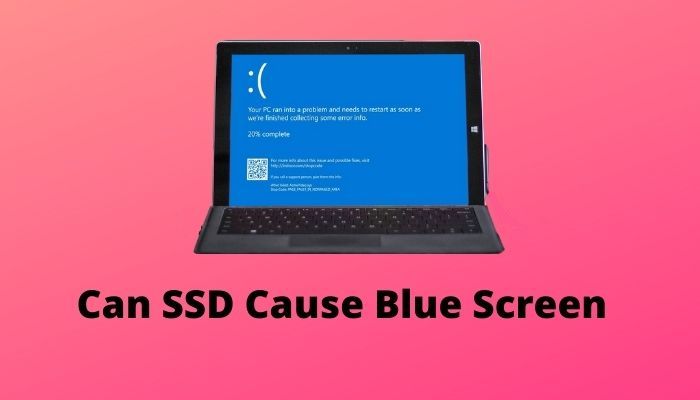
Sounds about a lot, right? Keep reading as I explain the facts.
Can a Bad SSD Cause a Blue Screen?
A blue screen on your system can happen for various reasons. There’s a chance a bad SSD can cause this. But, before jumping to any conclusion you might ask why it is happening to you, Is it just for a bad SSD or there’s something else.
For your sake, I’m gonna provide some common reasons behind BSOD and a method that you can use to decrypt the error code you see on the blue screen.
So, don’t roam around and read attentively for the next few minutes.
What Causes a Blue Screen?
A blue screen can happen for both hardware and software issues.
Here’s the list of possible reasons behind a BSOD:
- Memory issues (RAM/ SSD/ HDD)
- Components not properly connected.
- Out of date drivers.
- Overclocking
- Faulty motherboard or motherboard failure
- BIOS bugs
- Bugs in the Operating system.
There are other possible reasons like the Power supply issue but that’s very rare. PSU problem would give a sudden shutdown or reboot.
Do check our latest post on the Can SSD Overheat.
Analyze Error Code
Now, I’ll be explaining how you can decrypt the error code that appears when you get a BSOD to determine the possible reason.

Here’s how you can do that:
- INVALID_DATA_ACCESS_TRAP: This is one of the BSOD errors we face. (Error code 0x00000004). This can occur in any version of windows. When you install a new driver or new hardware, this error can appear. E.g. After installing a new driver, windows restarts simultaneously, and all of a sudden you see this error.
Windows registry corruption, driver conflict, and HDD/ RAM corruption cause this.
- NTFS_FILE-SYSTEM; This error suggests a possible disk file system corruption and probably is caused by failing sectors of your data drives. (Error code 0x00000024) When this error appears it immediately shuts down your computer so that the corrupt system can’t kill your PC.
Check out our expert-recommended Can SSD Improve FPS.
- NMI_HARDWARE_FAILURE: This kind of error is the worst for gamers. It snips up while playing a game, and suddenly the system crashes. (Error code 0x00000080)
This is a kind of hardware failure. Incorrectly configured, old, or damaged device drivers, corrupted registry of windows, etc. are the common reasons behind this error.
- DATA_BUS_ERROR: This BSOD error is more of a hardware problem, but it can also be for faulty or wrong versions of drivers being used. (Error code 0x0000002E) There are some other reasons like corrupted hardware, compatibility issue of hardware and operating system, faulty configuration.
To be precise, you should check for two things – Bad RAM, Faulty flash drive/SSD.
So, to sum up this session, we can say among the many reasons for getting a BSOD, a bad SSD is one of them.
But you don’t know whether your SSD is faulty or not! Don’t worry, In the next part, I’ll explain how you can determine your SSD’s health. Just follow my lead.
The top-end diffusion that the LEDs offer is world-class. But before that, go through our epic guide on Can SSD Cause Blue Screen.
How Do I Test If my SSD Is Faulty?
It is the most common belief that SSD failure is impossible due to their lack of moving parts like HDD. But nothing is fail-proof. It may last longer than HDD, but it fails eventually.
In this session, I’ll be clearing up some signs of a filing SSD and some methods for you to test if SSD is faulty.
Symptoms of SSD Failure
This is a simple overview test you can do without any tools. Check if your SSD is showing the following signs
- Computer takes longer time than usual: If your computer takes a long time to save files than usual that might be the effect of bad blocks on your SSD. You may also notice the freezing and crashing of applications along with general slowness on your PC.
- PC restarts more often: If your PC restarts itself more often, it’s a major sign of SSD failure. Though restarting can occur for many reasons but SSD failure is the most probable cause.
- Computer crashes during boot: While you are powering up your machine there are many causes that can crash your boot. SDD issues are simply one of the potential causes. If your computer responds positively when you press the restart button several times, the most probable result is you’re using a failed SSD.
- Read-only error: If you are trying to save data to your dive and get a read-only error, your SSD probably has bad sectors. When it happens, you can’t do anything requiring the SSD to write data.
These are the common symptoms you can check if you are not sure of your SSD. If your drive isn’t showing any of these signs, try the methods I’m gonna share next in order to make sure.
Also, check out our separate post on why Is SSD Compatible with All Motherboards.
Method 1: Check with chkdsk
Follow the steps to check with chkdsk.

- Go to my computer
- Select the drive you want to check e.g. C:\
- Click on properties
- Go to the tools tab
- Click check and after that click on Scan drive
If your driver contains any irregularities, you’ll find out there.
Check out my new post on SVM Mode In BIOS.
Method 2: Check with Command Prompt
Follow the steps exactly I explain.
- Search Command prompt in your windows.
- Right-click on it and select Run as administrator.
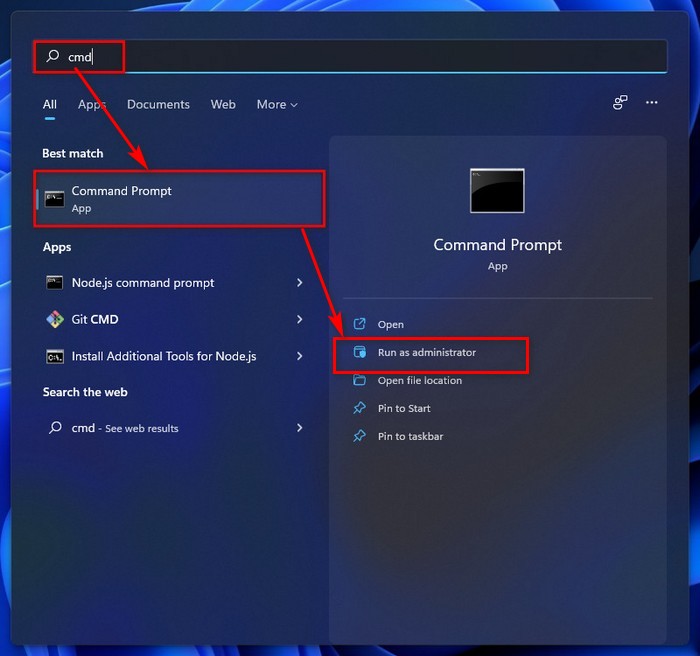
- Copy this command “wmic diskdrive get status” and paste it on there.
- Hit enter and see the result.
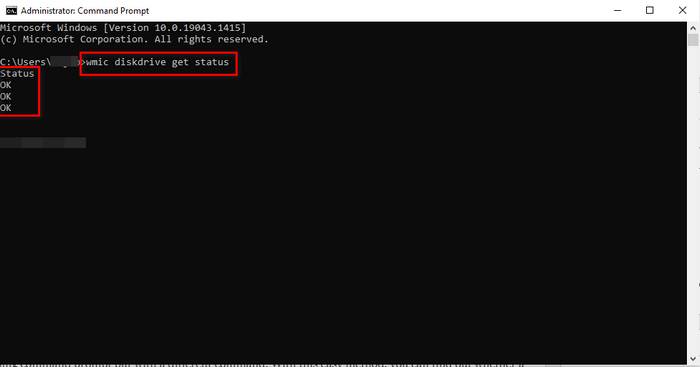
If your drives are fine, you’ll notice ok written on the prompt. If it’s not you might see caution/error on there.
Check out my new post on What are the fastest PCIE 4.0 SSDs.
Method 4: Check with Different Command
There’s another method you can perform using a command prompt but with a different command. With this easy method, you can find out whether a drive will fail or not. Just follow my lead to do it.
- Go to command prompt as in earlier steps.
- Copy this command “wmic /namespace:\\root\wmi path MSStorageDriver_FailurePredictStatus”
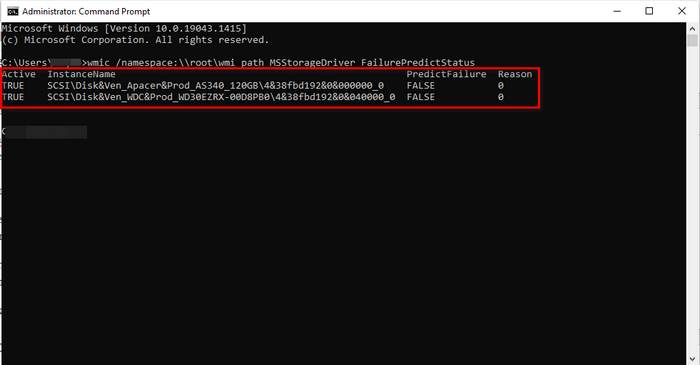
- Paste it on the command prompt
- Press enter and wait for a while.
On the right side of the prompt, you will notice a section named predict Failure. If your SSD works fine the answer will be False. If not, you’ll see True, written under the section. I hope you see the first one.
So, those were the procedure to make sure if you have a faulty SSD or not. If any of the tests goes south, I strongly recommend you start backing up your data or transfer it to somewhere else.
Conclusion
BSOD is a common issue unless it is caused by your SSD. Throughout this article, I explained all the reasons you can get a blue screen for.
When you face this problem, remember for what purpose you’re using SSD. If it doesn’t contain the operating system files, then you are probably on the safe side. If it does, Do not panic. just check the procedures from top to bottom.
I hope you got the help you needed.



